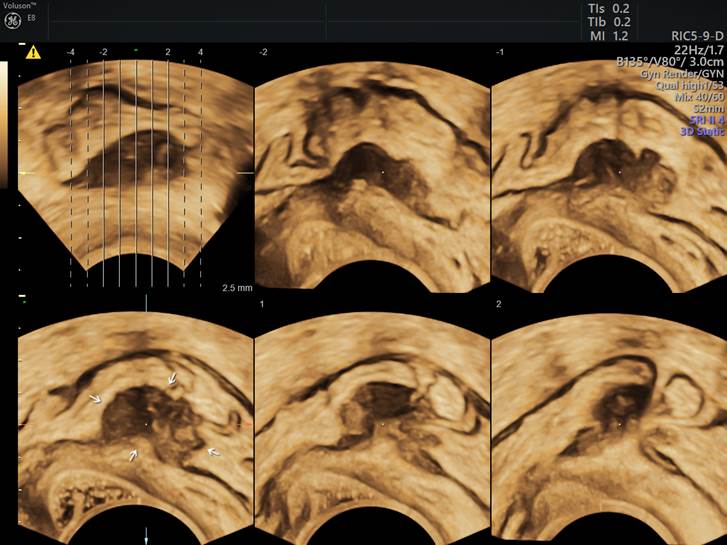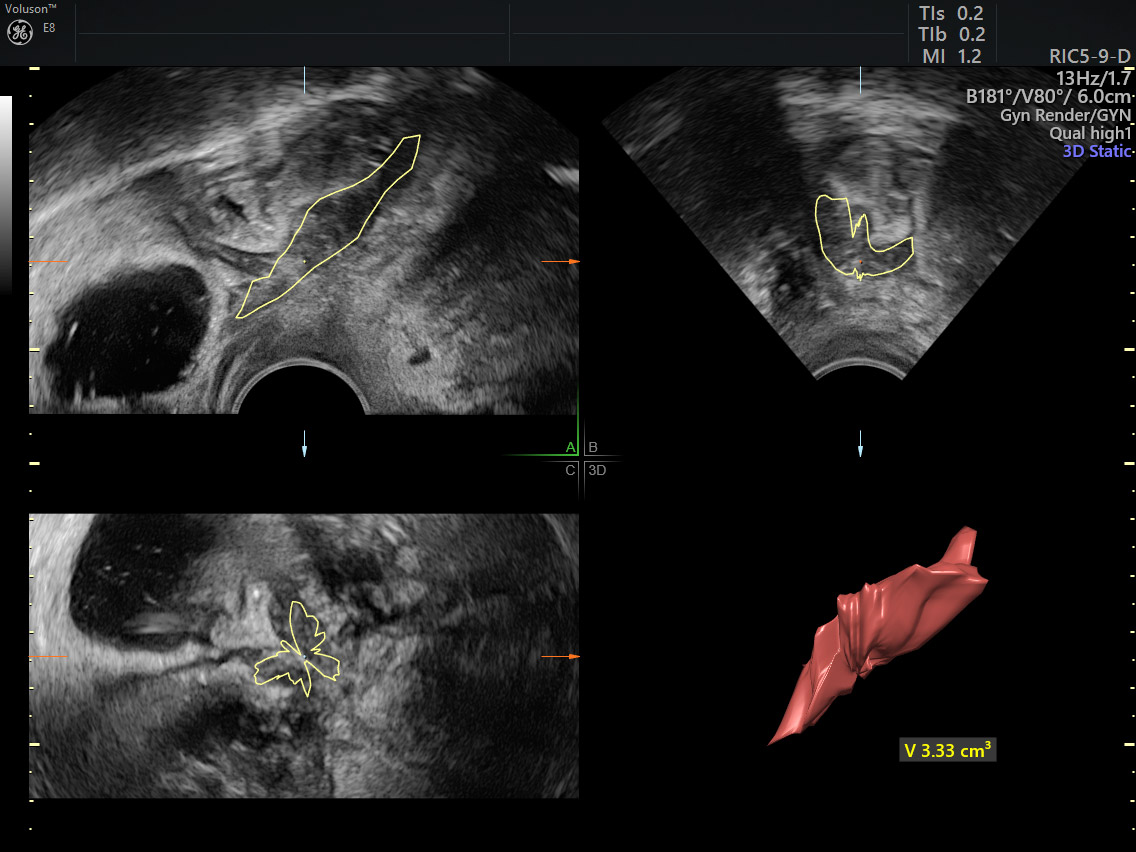
The Standardized Approach to Endometriosis Screening
Step-By-Step Scanning for Quicker Detection and Treatment

Endometriosis often goes undiagnosed. Learn how ultrasound offers a standardized approach to speed up detection and treatment.

“It’s a typical story in my practice. I see a lady who has visited several doctors. It’s evident she has endometriosis, but the doctors totally missed it. They didn’t even think of endometriosis or that it could be a possibility.”
For many women, an endometriosis diagnosis is a relief. There’s now an explanation for years of agonizing pelvic pain and intense bleeding. Finally, a reason why she can’t get pregnant. Experts around the world are turning to ultrasound to find more timely answers. You can improve your capabilities by following a systematic approach to sonography—a step-by-step guide developed specifically for scanning patients with suspected endometriosis.
While endometriosis is quite common, it often goes undiagnosed. The condition affects one in ten women, or 176 million people worldwide.1 Women with endometriosis wait an average of 7.5 years from the onset of symptoms to their eventual diagnosis.2 And during that time, they typically go through seven to ten doctors. 3
While many physicians will recommend laparoscopy for a definitive diagnosis, surgery isn’t needed to begin treatment. Stefano Guerriero, M.D., Professor of Obstetrics and Gynecology at University of Cagliari, says laparoscopy is too invasive—and for his patients, it’s always ultrasound first.
“In my opinion, laparoscopy is not diagnostic—it’s therapeutic. We have to arrive at laparoscopy to treat the patient, not prove the diagnosis,” Guerriero stressed. “I am able to make an ultrasonic diagnosis for a majority of my cases, and I can start treating my patients with oral contraceptives. We only perform surgery if it’s a necessity.”
The ability for ultrasound to detect ovarian endometriosis and deep infiltrating endometriosis (bowel and non‐bowel) is well documented. According to research, transvaginal ultrasound scan with the addition of 3D has a sensitivity of 90 percent and a specificity of 95 percent in detecting the most common lesions of deep infiltrating endometriosis—the intestinal lesions.4

Normal bowel wall (2D)

Deep infiltrating endometriosis with bowel involvement (3D with TUI/tomographic ultrasound imaging)
To educate physicians and researchers on how to identify endometriosis using ultrasound, The IDEA (International Deep Endometriosis Analysis Group) published a consensus opinion that outlines a systematic approach to examining the pelvis in women with suspected endometriosis.5 The protocol, which Dr. Guerriero helped create, also defines terms and measurements that describe the appearance of endometriosis on sonography.
“It’s a step-by-step approach. It’s very important to touch the organs and try to move them. That is fundamental to recognize the location of a lesion. We also push gently with the probe and interact with the patient to see if there is pain so we can obtain more information,” Guerriero explained.
For his practice, Guerriero relies on GE Healthcare’s Voluson™ ultrasound systems and routinely uses 3D imaging with OmniView. Another tool, Scan Assist, saves both measurement and annotation time, and is beneficial when utilizing these types of protocols. Guerriero also appreciates another Voluson feature, called VOCAL (Virtual Organ Computer-Aided Analysis). It enables volume calculations of irregularly shaped and complex anatomic structures, typically found in endometriosis imaging.

Deep Infiltrating Endometriosis utilizing VOCAL

Dynamic ultrasound image with frozen measurement (3D)
“They have a very high-quality, high-resolution probe. The quality of the image is so important—and with Voluson you have the capacity to move the probe, manipulate the organs, and maintain that good quality. If you can’t do that, you will lose information,” he stressed.
Technology is only one piece of the puzzle. For the protocol to be effective, more healthcare professionals will have to consider endometriosis as a possibility when a woman presents with chronic pelvic pain. The standardized approach must also be adopted universally—by everyone from gynecologists to general practitioners—in clinical and critical care settings.
“It has to be a consensus, but using the protocol can help put an end to the pain loop,” Guerriero said. “If you use the probe in the right manner, you stop a process. You can perform the entire examination and recognize there is something strange in the pelvis. You can stop this never-ending story.”
-
A Voluson 3D ultrasound of the pelvic anatomy, coupled with a careful exam, can help streamline the process of diagnosing endometriosis. Learn how Dr. Hanson manages her patients and sign up to Stay Informed.
-
Pelvic pain can be multifactorial in origin – the single most common cause is endometriosis. Transvaginal ultrasound has been shown to detect endometriosis with high accuracy.
-
Learn more about the 4-step ultrasound evaluation as suggested by the International Deep Endometriosis Analysis (IDEA) group.
-
What is ultrasound used for? Ultrasound has many applications for women's health, far beyond just obstetrics. Read our collection of FAQs.
-
When a patient presents with abnormal bleeding and you are concerned about endometrial hyperplasia, does doing a Voluson ultrasound first make sense? Learn here why it does and sign up to Stay Informed.
-
More than 11% of women in the USA may have endometriosis – it is a common cause of pelvic pain for women in their 30s and 40s. Voluson 3D ultrasound can add valuable information before surgery, especially in diagnosing and evaluating infiltrating endometriosis.
-
Patients may come to you with many ideas about endometriosis – the information they have is not always accurate. Learn about how Dr. Hanson separates fact from fiction for her patients. Sign up to Stay Informed.
-
Orilissa is a recently approved endometriosis medication for treatment of moderate to severe endometriosis pain. Learn more about this endometriosis medication.
-
When trying to diagnose stomach pain, physicians should consider the possibility that it may be due to both Crohn's disease and endometriosis.
-
For women with endometriosis, fatigue can be a common and debilitating symptom. Yet many physicians underestimate its frequency and severity.
-
Recent research finds that hormones and genes both may influence disordered proliferative endometrium. Learn more about the potential link today.
-
New research finds that women with a higher BMI, while less likely to have endometriosis, may be more likely to have severe endometriosis.
-
Providing patients with endometriosis pain relief options like heat application, acupuncture and exercising can help ease patient's symptoms.


